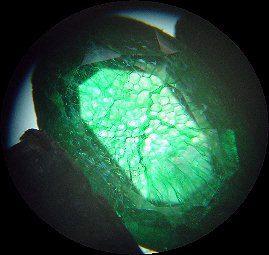Enhanced Gem Inclusions
Gem treatments can affect a stone’s value and stability. Learn how the most common procedures work and how to identify enhanced gem inclusions.
3 Minute Read
Related Articles
Pearl Treatments and Enhancements
Did you know that routine pearl treatments are the most common enhancements in the gem trade? Learn more about these...
Read More
Destructive Gemstone Testing
Destructive gemstone testing, done carefully, can help gemologists and mineralogists with difficult gem or mineral identifications. Learn the right techniques...
Read More
Emerald Myth Busters: Identifying Colombian Stones
Colombian emeralds can command premium prices. Jeffery Bergman separates emerald myth from fact when it comes to determining the origins...
Read More
Eight Opal Types Explained
Opal is a complicated gemstone, and many factors affect its price. Learn how to distinguish these eight opal types and...
Read More
Latest Articles
Milarite Value, Price, and Jewelry Information
Very rare milarite crystals can occur in green and yellow colors. Transparent material can yield small but pleasant looking faceted...
Read More
Appraising Pearls: How to Grade Pearls
Novice gemologists and jewelers may find appraising pearls difficult. Our guide will show you how to appraise and grade different...
Read More
Agate Buying Guide
Decorative, patterned forms of agate are excellent natural gems. Learn more about agate's mesmerizing patterns in our agate buying guide....
Read More
Carving Techniques for Handling Inclusions in Transparent Gems
Inclusions don't have to result in a loss of mass or value when cutting transparent gems. Learn how to manage...
Read More
Never Stop Learning
When you join the IGS community, you get trusted diamond & gemstone information when you need it.
Get Gemology Insights
Get started with the International Gem Society’s free guide to gemstone identification. Join our weekly newsletter & get a free copy of the Gem ID Checklist!
